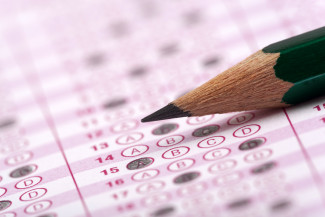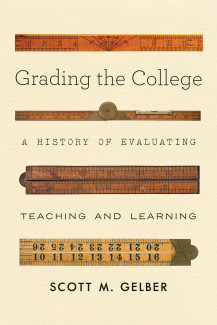
Johns Hopkins UniversityEst. 1876
America’s First Research University
Grading the College: A History of Evaluating Teaching and Learning

I first became interested in the history of efforts to evaluate teaching and learning while co-chairing Wheaton College’s assessment committee. I learned that skeptical colleagues sometimes perceived evaluation to be an outgrowth of a campaign to disempower professors while catering to students, parents, legislators, and corporate leaders. I came to understand that this critique depended in part on two interrelated assumptions about the past, neither of which had been investigated by historians. First, critics usually assumed that the roots of evaluation only stretched back to the start of the corporatization of higher education in the 1970s and 1980s. Second, most critics assumed that evaluation had always been associated with external accountability and imposed from outside of the academy with little respect for the professional or academic interests of faculty members.
I became concerned about how these assumptions could justify faculty disengagement from questions that seemed especially pressing at public institutions and at private tuition-dependent institutions (such as Wheaton). When I began to explore the archival record, it became clear that evaluation had not always been a market-driven or anti-intellectual phenomenon. Based on manuscript evidence from the papers of the AAUP, the American Council on Education, and a dozen university archives, Grading the College argues that efforts to evaluate teaching and learning date back to the 1920s and attracted substantial levels of faculty engagement during the post-WWII peak of shared governance.
The first half of the book focuses on the evaluation of teaching. Although it has proven difficult to measure teacher quality through observations or outcomes-based measures, a critical mass of faculty (including AAUP leaders) encouraged these efforts to replace the casual judgments of lone administrators. Dissatisfaction with every other option eventually led most faculty members to accept the premise of student course evaluations. Despite their reputation as a quintessential instrument of corporatization, student questionnaires actually appealed to professors because they generated large numbers of mostly-positive reviews, required little labor to implement, and yielded results that seemed to be statistically reliable. Although some professors questioned their validity (with good reason), three-quarters of faculty members believed that course evaluations should be used in tenure and promotion proceedings by the mid-1970s.

The second half of the book focuses on the evaluation of learning. Although less popular among faculty than course evaluations, standardized tests attracted a surprising level of support prior to their more recent association with external accountability. Professors were especially likely to express interest in examinations of general education requirements that attempted to promote new cognitive, civic, ethical, and aesthetic goals. Midcentury faculty members could be relatively confident that these tests would generate reassuring portraits of their performance because most studies indicated that higher education was delivering on its promises. The traditional religious orientation of the American college was supplanted by new objectives (including employment and “critical thinking”) that seemed more amenable to social scientific measurement. Administrators and professors prompted test makers to seek more sophisticated methods, while also fueling the development of rubrics, surveys, and other holistic forms of assessment. Surveys, in particular, appealed to many faculty members because they purported to evaluate complex aims (such as the development of cosmopolitan or democratic attitudes) that seemed vital during the post-WWII era.
A degree of skepticism toward evaluation is certainly warranted. Evaluation can reflect the priorities of external parties who applaud the erosion of faculty power, and every evaluation technique threatens to oversimplify or constrain. Too often evaluators fail to acknowledge the complex interplay between outcomes, resources, inequality, and discrimination. Nevertheless, our conventional origin stories have fueled quasi-conspiratorial accounts of current efforts. For better and worse, faculty members share some responsibility for the evaluation landscape, much of which consists of tools of our own design. A deeper understanding of this history, featuring a century of flawed yet earnest attempts, may help to dislodge the impasse between proponents and critics. I hope that Grading the College will promote deliberation about how evaluation might facilitate more helpful supervision of college teachers, more thoughtful conversations about institutional goals, and more open communication with our constituencies.
Order Grading the College: A History of Evaluating Teaching and Learning -- published on June 23, 2020 -- at the following link: https://jhupbooks.press.jhu.edu/title/grading-college
Scott M. Gelber is an associate professor of education and (by courtesy) history at Wheaton College. He is the author of Grading the College: A History of Evaluating Teaching and Learning, The University and the People: Envisioning American Higher Education in an Era of Populist Protest, and Courtrooms and Classrooms: A Legal History of College Access, 1860–1960.



